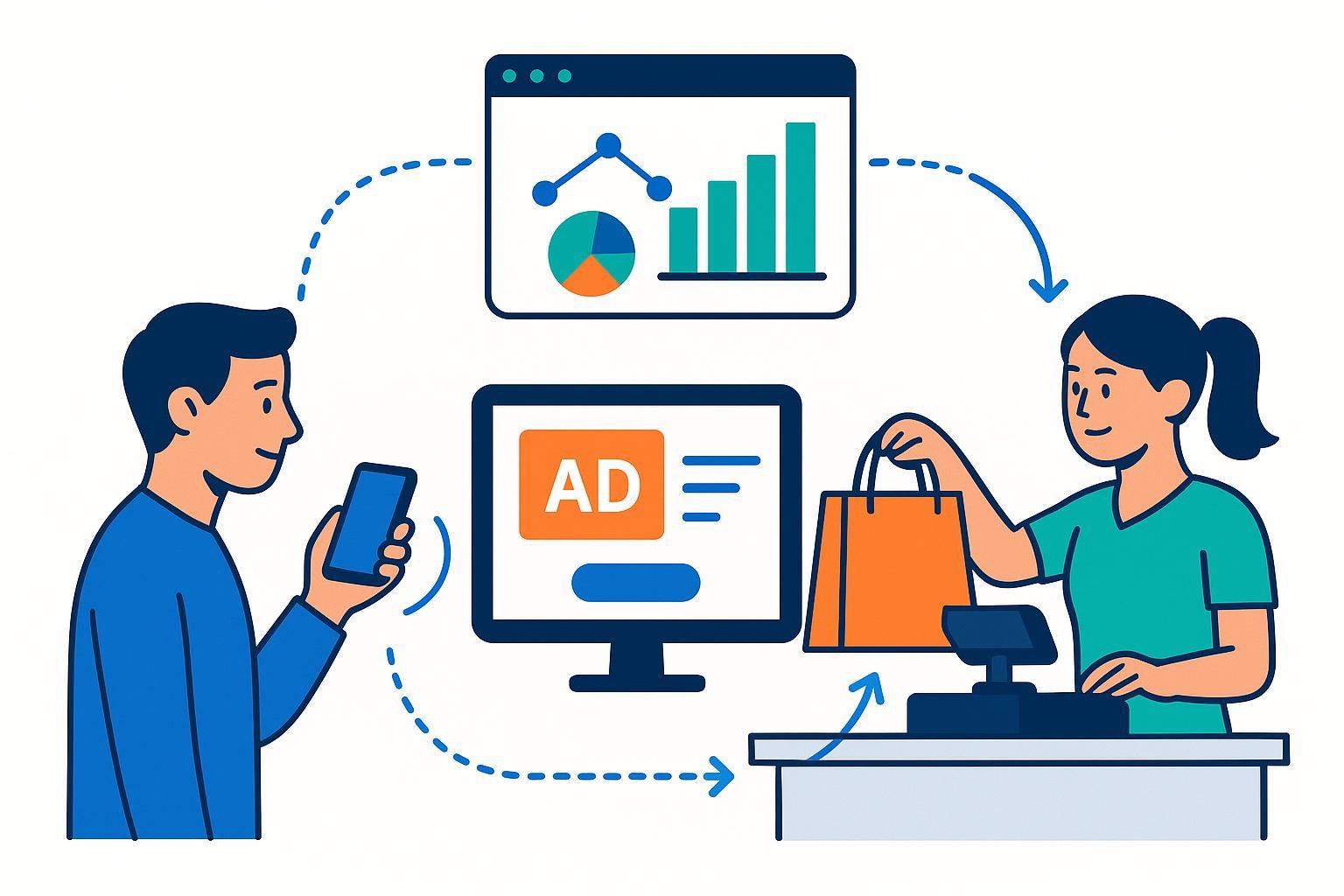Unlocking the Secrets of Offline Attribution: Why It Matters for Your Marketing Strategy

Introduction: The Missing Link in Marketing Measurement
In the digital age, marketers invest heavily in online campaigns. But what happens when a customer clicks your ad, researches your products online, and then walks into your physical store to make a purchase? Traditional analytics tools often miss this crucial connection, leaving a gap in your understanding of what truly drives sales. This is where offline attribution steps in—bridging the online-to-offline divide and helping you reveal the real ROI of your marketing spends.
What Is Offline Attribution?
Offline Attribution is the process of assigning credit to your marketing campaigns for sales or conversions that happen outside digital channels—such as in-store purchases or phone orders—by linking them to previous online touchpoints. Leading industry sources define it as “the practice of connecting digital engagement with a brand (like ad clicks or website visits) to offline actions, typically through data uploads, POS integrations, or unique promotional codes” (Netcore glossary; Choozle blog; Acxiom).
Unlike online-only attribution models, offline attribution tracks the full customer journey, revealing the effects of your digital campaigns on real-world actions—such as someone redeeming a coupon in-store or calling to place an order after seeing your ad.
How Does Offline Attribution Work?
At its core, offline attribution involves matching data from online campaign touchpoints (like ad clicks, emails, or social engagement) to offline conversion data collected via point-of-sale (POS) systems, CRMs, or phone logs. The magic happens through identifiers—such as email addresses, phone numbers, loyalty program IDs, or branded promo codes—that serve as “bridges” between a customer’s digital footprint and their offline actions.
Key technical mechanisms include:
- POS/CRM Data Integration: Importing offline sales into an attribution platform, often automatically, using server-side tracking or scheduled uploads.
- Promo/Coupon Codes: Offering unique in-store codes that tie the purchase back to a specific campaign.
- Call Tracking: Associating phone numbers from digital ads with subsequent call-in purchases.
- Identity Resolution: Using sophisticated algorithms to match disparate data sources across channels.
For example, let’s say a customer:
- Clicks your Facebook ad linked to your Shopify store.
- Later walks into your brick-and-mortar shop and makes a purchase using a promo code from the ad.
- The POS transaction (including the promo code and/or loyalty ID) syncs with your attribution tool, which then matches the offline sale with the original online interaction.
Why Offline Attribution Matters for E-Commerce Brands
For e-commerce brands operating both online and offline (through retail stores, pop-ups, phone sales, etc.), offline attribution unlocks a true picture of marketing effectiveness. Benefits include:
- More Accurate ROI Measurement: Understand which campaigns drive revenue, wherever it happens.
- Better Budget Decisions: Allocate spend to channels proven to influence not just digital checkouts but store traffic and phone orders.
- Improved Personalization: Fine-tune your campaigns based on a unified, 360-degree view of each customer journey.
Yet, challenges exist: integrating disparate systems, ensuring privacy and compliance, and accurately matching identities. Leading platforms address these hurdles with secure, server-side data flows and robust identity resolution.
How Attribuly Powers E-Commerce Offline Attribution
Attribuly is built for modern e-commerce—especially brands on Shopify seeking to unify their online and offline sales data for better attribution. Here’s how Attribuly makes offline attribution seamless:
- Shopify (and POS) Integration: Automatically link store sales, phone orders, and CRM uploads to your digital touchpoints.
- Multi-Touch Attribution: Assign credit across every step of the customer journey—ad clicks, website visits, and in-person conversions.
- Server-Side Tracking: Ensure privacy-compliant, reliable data syncs between your Shopify, POS, and CRM systems without technical headaches.
- Branded Promo Code Generator: Easily create unique, trackable codes for in-store or phone orders, tying offline revenue directly to campaigns.
- Identity Resolution Engine: Match customers and actions across all channels, revealing hidden sources of revenue.
Scenario in action:
- A customer clicks a Google ad, browses your Shopify site, but later visits your store to purchase. At the checkout, they present a code from your campaign. Attribuly syncs this offline sale, traces it back to the ad, and shows the true impact of your marketing—no more "dark" conversions.
Conclusion: Connect Every Touchpoint, Capture Every Sale
Offline attribution is the missing puzzle piece for e-commerce marketers serious about measuring what works—online and off. With Attribuly, you can finally connect the entire customer journey, optimize your spend, and uncover revenue you might have missed.
Ready to unlock true marketing transparency? Discover how Attribuly can help your brand measure and maximize every touchpoint—online to offline.
